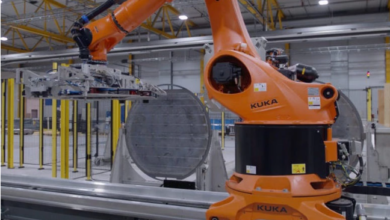Hydrogen Economy Review: Chinese companies eye hydrogen in industrial applications
Chinese companies have recently started collaborating with international players for the promotion of hydrogen and fuel cell technology.

The 6th International Hydrogen and Fuel Cell Vehicle Conference (FCVC 2021) took place in China and was attended by leading global automotive companies. During the conference, a number of partnerships deals reached and new products launched. Ji Chong Hydrogen Energy unveiled a single-stack 160 kW hydrogen fuel cell as a part of its latest achievement in MH series stacks. The stack can be used in any fuel cell system for applications as backup power, in ships, aircraft, etc. Ballard Power Systems and W. L. Gore & Associates also agreed to advance the benefits and applications of fuel cell technologies in industrial and automotive applications.
The event also witnessed the launch of the fuel cell vehicle city cluster cooperation project which aimed to develop the industrial hydrogen chain in China. It is also hoped that the project will integrate various demonstration projects leading to promoting the development of the hydrogen supply chain.
Meanwhile, Zhongtai Co., Ltd., Songshan District People’s Government of Chifeng City, China Shipbuilding Corporation Wind Power Development Co., Ltd. and Zhejiang Runfeng Energy Group Co., Ltd. China, also signed Chifeng Wind Power, Photovoltaic Hydrogen Production and Hydrogen Liquefaction Industrialization Project agreement. Under the project, all parties will work together to develop low-cost renewable energy electrolysis for hydrogen production technology.
In Europe, the Netherlands’ Orangegas (OG) had signed a contract with GroenLeven to purchase green hydrogen produced at the Sinnewetterstof project in Oosterwolde. The hydrogen will be produced by using solar energy from the adjacent solar park. OG will distribute the hydrogen to various filling stations and industrial processes throughout the Netherlands.
In Spain, Acciona and Enagás have updated their green hydrogen plant at Mallorca, which was announced back in December 2020. The plant is expected to start operation by December 2021 and will be able to produce 330 tonnes/year of green hydrogen.
In Italy, NextChem and Paul Wurth signed an agreement to develop and use electrolysis and syngas in the steel and iron industry. They will convert natural gas to synthesis gas (syngas) for iron ore reduction, which will reduce CO2 emission and slash the use of fossil fuels.
In Switzerland, ABB and Axpo partnered to supply cost-effective green hydrogen by developing integrated green hydrogen production facilities in Italy. Initially, they will perform a feasibility study to find ways to reduce the cost of green hydrogen.
Outside Europe, in Australia, Stanwell proposed a 3 GW green hydrogen electrolysis facility in Central Queensland. The facility is being built with the support of Iwatani Corporation and to use the produced hydrogen in local Gladstone industries and export it to Japan.
In the US, Air Products announced to construct net-zero hydrogen energy complex through cooperation with Air Products Canada Ltd., Government of Canada and the Province of Alberta. The complex will start with the net-zero hydrogen production and liquefaction facility, with an investment of around CA$ 1.3 billion (US$ 1.07 billion) which is expected to be complete by 2024.
Air Products also partnered with Baker Hughes for the next generation of hydrogen compression, lowering the cost of hydrogen production and increasing hydrogen adoption as zero-carbon fuel. Under the partnership, Baker Hughes will also facilitate Air Products with advanced hydrogen compression and gas turbine technology, which will be used in Air Products global hydrogen projects such as hydrogen complex at Alberta and NEOM in Saudi Arabia.
Talos Energy and Storegga Geotechnologies Limited also partnered to assess and develop carbon capture and storage (CCS) technology at the Gulf Coast and Gulf of Mexico (GOM), and also at Texas, Louisiana, Mississippi and Alabama. The companies will work with the carbon emitters, service companies, infrastructure providers and financial partners to establish and develop CCS ventures.
In Canada, Xebec Adsorption Inc., a subsidiary HyGear made a ten-year contract with one of the largest glass manufacturers in the world. Under the contract, HyGear will act as a provider of Gas-as-a-Service, which will be produced during hydrogen recycling. It is a pay-per-use contract that is valued at around US$ 1.6 million over ten years.
Canadian Natural Resources, Cenovus Energy, Imperial, MEG Energy and Suncor Energy made an alliance to jointly work with the federal and Alberta governments to achieve net-zero greenhouse gas (GHG) emissions from oil sands operations by 2050.
We add around 100 hydrogen-related news every week to the H2Bulletin Hydrogen Economy Platform. Join our H2 Intelligence Platform today and start making informed decisions.
